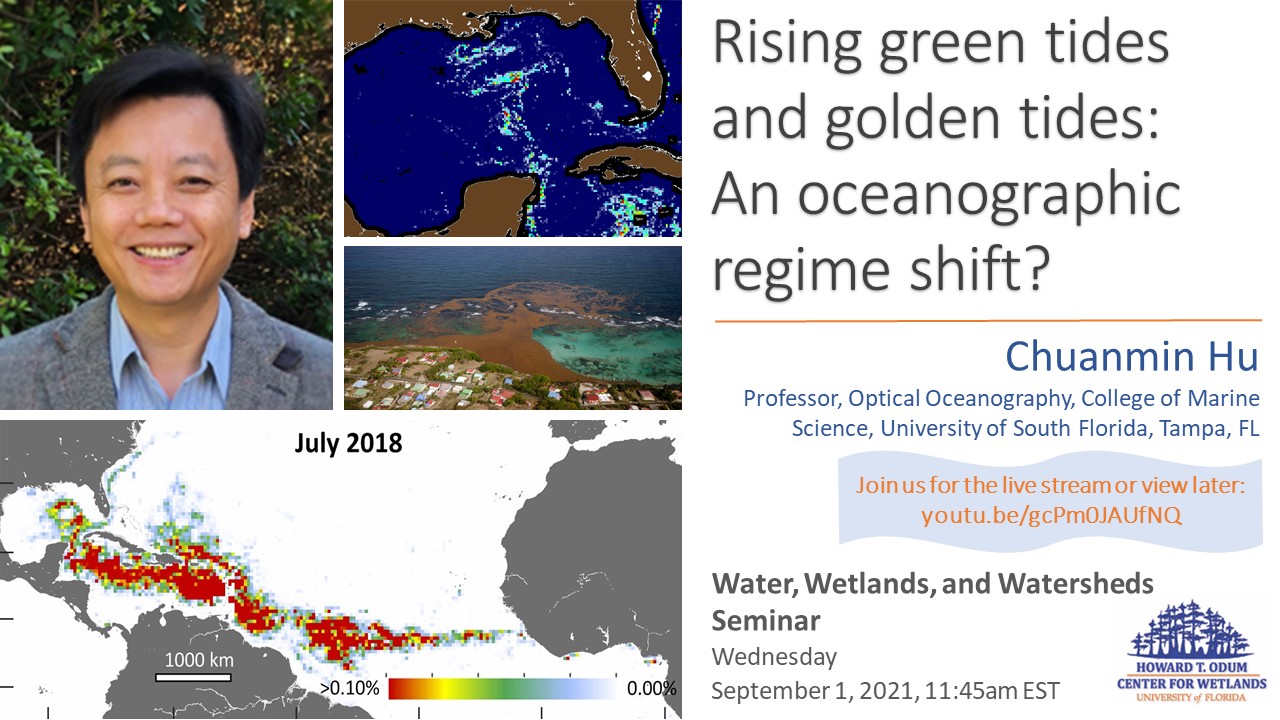September 1, 2021

Rising green tides and golden tides: An oceanographic regime shift?
Chuanmin Hu, Professor, Optical Oceanography, College of Marine Science, University of South Florida, Tampa, FL
Join us for the live stream Sept 1, 11:45am EST: https://youtu.be/gcPm0JAUfNQ
(Please visit our youtube channel main page for the stream is there are any issues with the direct link.)
ABSTRACT
Blooms of Ulva and Sargassum macroalgae, often called green and golden tides, respectively, have been reported in many places around the world. These macroalgae provide important ecological functions in the ocean, but can cause many problems when large quantities are washed ashore. Using satellite data, field and laboratory measurements, and novel macroalgae-specific algorithms, we show bloom patterns of Ulva prolifera and Sargassum between 2000 and 2018 in the western Pacific (Yellow Sea and East China Sea) and tropical Atlantic. While their seasonality indicates algae growth cycles, large quantities detectable in satellite imagery only occurred in recent years. Analysis of environmental conditions suggests that large-scale blooms may become a new norm in these study regions, thus representing potentially a regime shift. How to adapt to such a regime shift and what are its ecological/biogeochemical consequences all remain to be studied, however.
Bio
Chuanmin Hu is currently a professor of optical oceanography at the University of South Florida (USA). He uses laboratory, field, and remote sensing techniques to study marine algal blooms (harmful and non-harmful, macroalgae and microalgae), oil spills, coastal and inland water quality, and global changes. He has published over 300 peer reviewed papers on these topics. He is a team member of several NASA’s and NOAA’s satellite missions, and a member of the Academy of Science, Engineering, and Medicine of Florida.
Visit Dr. Hu’s Optical Oceanography Laboratory website.
POSTCARD
